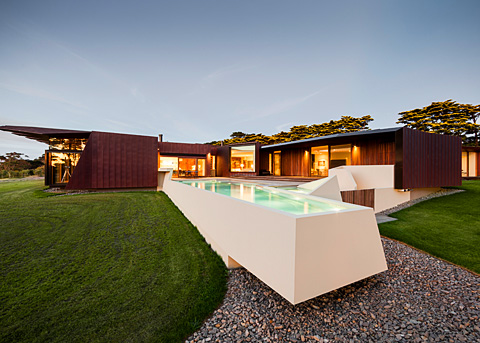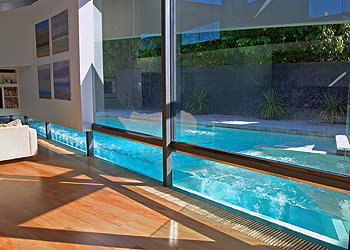Kit pools being installed by inexperienced or unregistered pool builders can leave home-owners with expensive legal bills and insurance issues, the Swimming Pool and Spa Association of Victoria has warned.
Both metropolitan and regional pool owners make up a percentage of consumers seeking advice from the Swimming Pool and Spa Association (SPASA) on legal and insurance matters.
"The most effective way people wanting to build a pool or spa can protect their financial and legal position is to use a builder registered with the Building Practitioners Board, in the categories of 'Domestic Builder – Unlimited' or 'Domestic Builder – Limited (Swimming Pools)'," SPASA Chief Executive Officer, Chris Samartzis, said.
"Unregistered and inexperienced pool builders can talk unwitting home-owners into accepting all of the responsibility for occupational health and safety, building faults or structural failures of the pool or spa by getting them to become owner-builders.
"This means that the builder avoids having to provide domestic building insurance for works over $16,000, which is compulsory for all registered pool builders.
"It is usually only when the home-owners go to sell their home, within six and a half years of the pool being built, that they find out they are legally bound to provide domestic building insurance before the sale can go ahead. This can be in excess of a couple of thousand dollars," Mr Samartzis said.
"If the pool has been built by an unregistered pool builder it can be difficult, or more expensive, to get insurance, with the unregistered pool builder long gone.
"What most owner-builders don't realise is that they become liable for issues, such as damage to a neighbour's property, or a worker being injured on site. This could see the owner-builder entangled in expensive legal battles for compensation."
The Victorian Building Authority advises that a building permit is required for all pools or spas with a depth of water of more than 30cm, regardless of whether construction is being undertaken by an owner-builder. The building permit must also include details of the proposed safety barriers. "The building permit application can be made to a municipal or private building surveyor," VBA Director of Technical and Regulation, Jarrod Edwards, said.
"The building permit application can be made to a municipal or private building surveyor," VBA Director of Technical and Regulation, Jarrod Edwards, said.
"Following completion of the pool or spa, and installation of a permanent barrier, the relevant building surveyor must inspect the work and, if compliant, issue a certificate of final inspection.
"Home-owners must ensure they receive that certificate before using their pool or spa, in order to keep their family safe."
Here are five important steps home-owners should take before proceeding with the installation of a pool or spa:
1. Get a building permit from a registered building surveyor. Check with your local council or use the 'Find a practitioner' link on the VBA website.
2. Request to see the builder's registration card from the Building Practitioners Board, search yourself on the Victorian Building Authority's website, or call 1300 815 127.
3. Ask to see a copy of the builder's domestic building insurance policy for the work and public liability insurance policy.
4. Check if the builder is a "Pool Builder Member" of SPASA. All SPASA Pool Builder category members must have the correct insurance and be registered with the Building Practitioner's Board.
5. Read SPASA's consumer advice and fact sheets.
Media Enquiries: Chris Samartzis, SPASA CEO, 9501 2040



